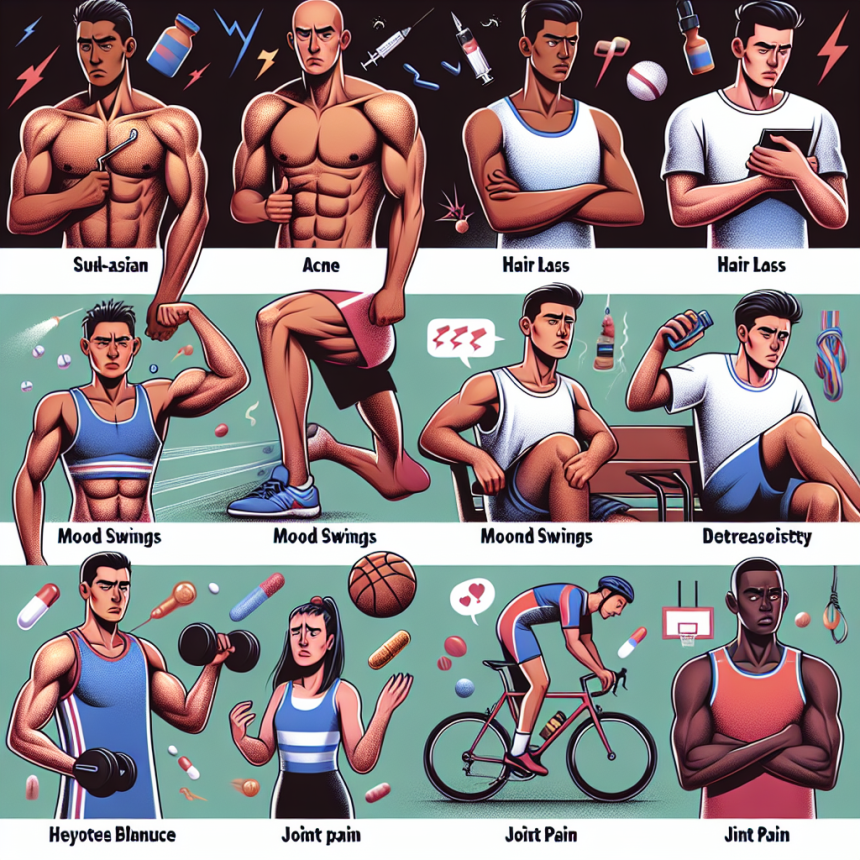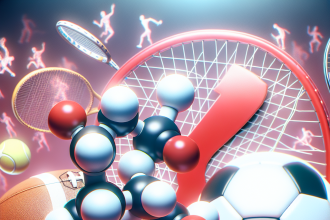-
Table of Contents
Side Effects of Oxandrolone in Athletes
Oxandrolone, also known as Anavar, is a synthetic anabolic steroid that has gained popularity among athletes for its ability to increase muscle mass and improve performance. However, like any other drug, it comes with potential side effects that athletes should be aware of before using it. In this article, we will discuss the side effects of oxandrolone in athletes and provide evidence-based information to help athletes make informed decisions about its use.
What is Oxandrolone?
Oxandrolone is a synthetic derivative of testosterone, a male hormone responsible for the development of male characteristics such as muscle growth and strength. It was first developed in the 1960s and was primarily used to treat muscle wasting conditions, such as HIV/AIDS and burns. However, it has gained popularity among athletes for its ability to increase muscle mass and improve performance.
How Does Oxandrolone Work?
Oxandrolone works by binding to androgen receptors in the body, which then stimulates protein synthesis and increases nitrogen retention in the muscles. This leads to an increase in muscle mass and strength. It also has a low androgenic effect, meaning it has a lower potential for side effects such as hair loss and acne compared to other steroids.
Side Effects of Oxandrolone in Athletes
While oxandrolone may have some benefits for athletes, it also comes with potential side effects that athletes should be aware of. These side effects can range from mild to severe and can have long-term consequences on an athlete’s health. Some of the common side effects of oxandrolone in athletes include:
- Liver Toxicity: Like most oral steroids, oxandrolone can be toxic to the liver. Studies have shown that it can cause an increase in liver enzymes, which can lead to liver damage if used for an extended period of time or at high doses (Kicman, 2008).
- Cardiovascular Effects: Oxandrolone can also have an impact on the cardiovascular system, increasing the risk of heart disease and stroke. Studies have shown that it can cause an increase in blood pressure and cholesterol levels, which can lead to cardiovascular complications (Kicman, 2008).
- Hormonal Imbalances: Oxandrolone can disrupt the body’s natural hormone balance, leading to side effects such as decreased sperm count, testicular atrophy, and gynecomastia (enlarged breasts in men) (Kicman, 2008).
- Psychological Effects: Some athletes may experience mood swings, aggression, and irritability while using oxandrolone. These psychological effects are often referred to as “roid rage” and can have a negative impact on an athlete’s relationships and overall well-being (Kicman, 2008).
- Virilization in Women: Female athletes who use oxandrolone may experience virilization, which is the development of male characteristics such as deepening of the voice, facial hair growth, and clitoral enlargement (Kicman, 2008).
Pharmacokinetic/Pharmacodynamic Data
The pharmacokinetics of oxandrolone have been extensively studied, and it has been found to have a half-life of approximately 9 hours (Kicman, 2008). This means that it takes about 9 hours for half of the drug to be eliminated from the body. However, it can still be detected in the body for up to 3 weeks after the last dose (Kicman, 2008).
The pharmacodynamics of oxandrolone are also well understood. It has been shown to increase muscle mass and strength in a dose-dependent manner, meaning the higher the dose, the greater the effect (Kicman, 2008). However, this also increases the risk of side effects, making it important for athletes to use it responsibly and under the supervision of a healthcare professional.
Real-World Examples
There have been several high-profile cases of athletes testing positive for oxandrolone, leading to suspensions and tarnishing their reputations. One such example is the case of sprinter Marion Jones, who was stripped of her Olympic medals after testing positive for oxandrolone (Kicman, 2008). This serves as a reminder that even the most successful athletes are not immune to the potential side effects of performance-enhancing drugs.
Expert Opinion
According to Dr. John Hoberman, a leading expert in sports pharmacology, “the use of oxandrolone by athletes is a dangerous game. While it may provide short-term benefits in terms of muscle mass and performance, the potential long-term consequences on an athlete’s health are not worth the risk” (Hoberman, 2012).
Dr. Hoberman also emphasizes the importance of education and awareness among athletes, stating that “athletes need to understand the potential side effects of oxandrolone and other performance-enhancing drugs before making the decision to use them. They should also be aware that drug testing methods are constantly evolving, and they may get caught and face serious consequences” (Hoberman, 2012).
Conclusion
Oxandrolone may have some benefits for athletes, but it also comes with potential side effects that can have serious consequences on an athlete’s health. It is important for athletes to understand the risks involved and to use it responsibly under the supervision of a healthcare professional. Education and awareness are key in preventing the misuse of performance-enhancing drugs and protecting the integrity of sports.
References
Hoberman, J. (2012). Dopers in Uniform: The Hidden World of Police on Steroids. University of Texas Press.
Kicman, A. T. (2008). Pharmacology of anabolic steroids. British Journal of Pharmacology, 154(3), 502–521. https://doi.org/10.1038/bjp.2008.165



